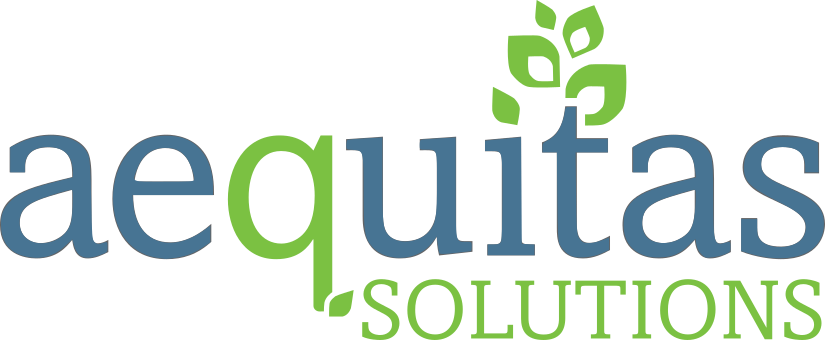Efficiently managing student data and streamlining district operations is crucial for the success of any public school district. A Student Information System (SIS) is a comprehensive software designed to optimize student-related processes, enhance communication, simplify state reporting, and improve data security.
Selecting the right SIS for your school district is a decision that can impact your entire educational community—from office staff and teachers to parents and students. Selecting this piece of software is no simple feat and involves in-depth evaluations of potential solutions. To help you make an informed choice, we’ve compiled a checklist of what to consider.
1. SIS Needs Assessment
Conducting a needs assessment is a critical first step in selecting a Student Information System. This evaluation involves thoroughly analyzing your current SIS to understand its strengths and weaknesses.
Start by examining the existing software’s functionality and performance. Identify areas where it excels and areas where it falls short, whether it’s in terms of data accuracy or overall efficiency. Also, consider the service levels and support your organization receives from your current SIS vendor. Gather feedback from your users, including teachers, administrators, and support staff, to better understand their challenges with the current system.
Once your district has identified the weaknesses and pain points, envision your ideal SIS. Consider characteristics specific to your district, such as the size, the number of students, and any unique challenges your district faces. You should also consider scalability to ensure that the new SIS can accommodate future growth and changing needs.
A well-developed needs assessment is a roadmap for the later stages of the SIS selection process. It provides a clear understanding of what is essential for your district, guiding the evaluation of potential solutions and facilitating informed decision-making.
2. Streamlined Integrations
Integration capabilities play an important role in the functionality and efficiency of a Student Information System. Seamless integrations with existing software, like Learning Management Systems (LMS), financial tools, and human resources software, are essential for simplifying administrative and instructional processes and improving the adoption of your new SIS.
When an SIS integrates seamlessly with LMS platforms like Google Classroom or Canvas, it creates a synchronized educational environment. This integration ensures that data related to student progress, grades, assignments, and other relevant information can be easily shared between the SIS and the LMS.
Reliable integrations also contribute to data accuracy and reliability. When information flows seamlessly between systems, the likelihood of errors or discrepancies decreases significantly. This saves time that would otherwise be spent on manual data entry and reconciliation and ensures that decision-makers can rely on accurate and up-to-date information.
3. Custom Reports and Analytics
Custom reporting options stand out as a crucial feature in any comprehensive Student Information System. A one-size-fits-all approach to reporting often falls short of providing the specific information that administrators need to make informed decisions for their district.
With customizable reporting options, administrators can tailor reports to pull relevant information to their specific role or need. Real-time reporting capabilities further enhance the functionality of an SIS. The ability to access up-to-the-minute data gives administrators a reliable foundation for decision-making.
Reporting is particularly important in addressing new district challenges or taking advantage of new opportunities. Whether it’s monitoring attendance, evaluating academic performance, or assessing the impact of specific initiatives, real-time reporting ensures that administrators have the most current information at their fingertips.
4. Compliance with CALPADS State Reporting
Ensuring compliance with California state reporting standards, also known as CALPADS, is not only a regulatory obligation but also essential for creating transparency, accountability, and informed decision-making at district and state levels.
Selecting an SIS with comprehensive state reporting tools ensures your district meets CALPADS compliance requirements. SIS state reporting tools are designed to streamline the process of gathering, organizing, and submitting the data necessary for CALPADS. The tools should also go beyond data storage and offer functionalities that specifically cater to the intricate reporting specifications outlined by the state of California.
CALPADS reporting often necessitates precise data points to meet state standards. An SIS with complete reporting capabilities not only ensures the accuracy of the data but also provides mechanisms for data validation and quality assurance. Data validation is particularly important in avoiding errors and discrepancies that might lead to non-compliance and potential consequences.
5. Accessible Training & Customer Support
Local, expert customer support and knowledgeable training resources are integral components of successfully implementing and utilizing a Student Information System. Ensuring your vendor is responsive and has adequate resources in these areas is crucial to ensure your staff receives the training and services required to use your SIS effectively.
When considering a new Student Information System for your district, thoroughly evaluate the support and training offered by the vendor. The training should be comprehensive, addressing the diverse needs of different user groups. It should cover not only the basic features of the SIS but also provide insights into best practices and strategies for efficient usage.
Customer support services provided by the SIS vendor are equally vital. The responsiveness and effectiveness of support channels, including email and phone support, contribute significantly to timely problem resolution. A reliable support system minimizes downtime, allowing users to address issues promptly and enabling districts to function efficiently.
6. Ability to Configure and Extend Your SIS
Choosing a Student Information System that allows users to configure and extend or customize the interface and data model can help improve users’ efficiency. Configurability can include features like customizing data fields and reports, adjusting workflows, and personalizing user interfaces to ensure that the system aligns with the district’s operational structure and the critical tools for day-to-day success.
The ease of configuring a user’s SIS interface is another critical factor. School administrators and staff may not have extensive programming expertise, so the SIS should offer a user-friendly interface that allows easy customization.
These customization tools should also be intuitive, requiring minimal training to enable users to adapt the system to their needs. This ensures customization is accessible to the district’s broader range of users.
7. SIS Vendor Reputation
Vendor reputation is critical to consider when selecting a Student Information System. Consider gathering feedback from both current and past customers. This user sentiment analysis offers a practical understanding of what to expect regarding ongoing assistance and the overall user experience.
Case studies can help better understand how the vendor’s SIS has been implemented and utilized in real-world settings. Examining case studies can offer nuanced insights into the adaptability and effectiveness of the SIS in diverse educational environments.
The Right Student Information System for Your District
Selecting the right Student Information System for your school district is a significant decision that can impact efficiency, state reporting, and the overall educational experience provided to your students.
By carefully considering the items on this checklist, you can make an informed choice that will benefit your district and its students for years. Remember that an SIS should meet your current needs and support your district’s future growth and development.
At Aequitas Solutions, we have over 25 years of experience in California K-12 school districts. Our enterprise Student Information System, Q, is a comprehensive solution backed by local support. If you’re interested in learning more about our SIS suite, contact us for more information.


